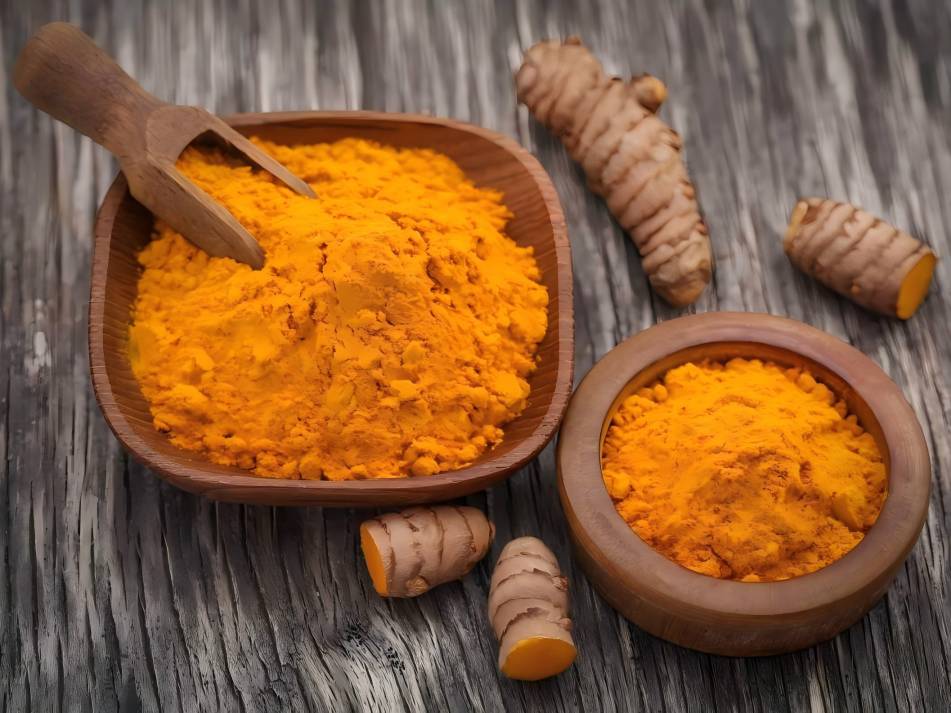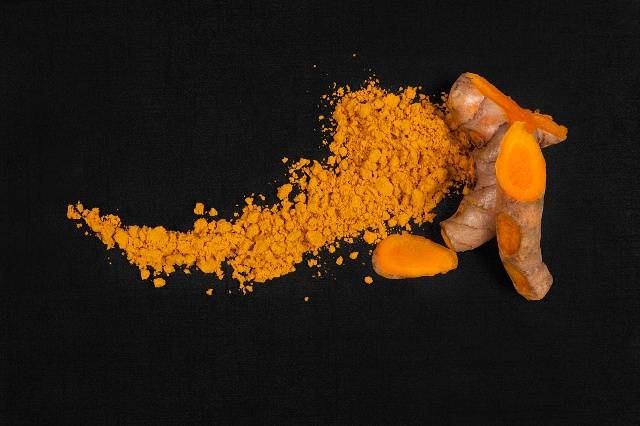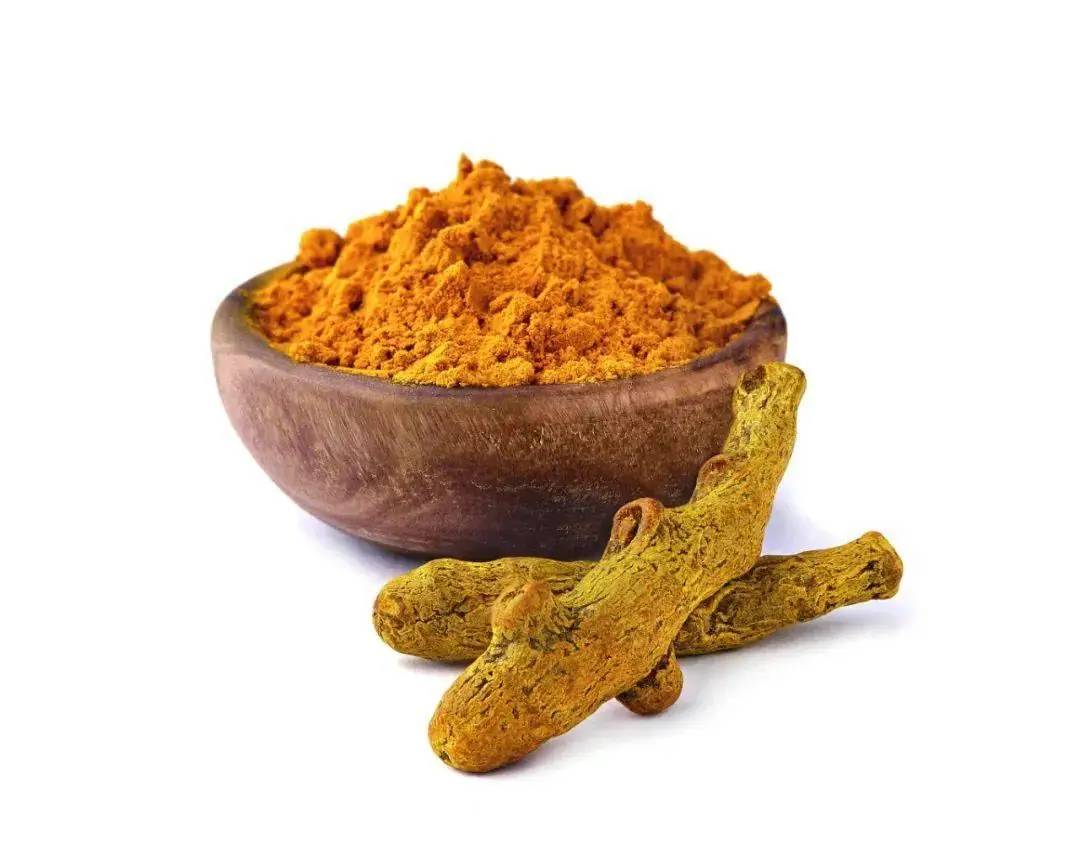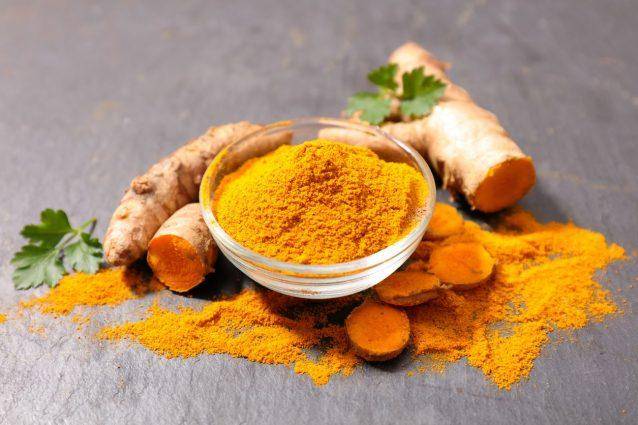What Is the Use of Curcumin in Telugu?
Curcumin is a polyphenolic compound extracted from plants in the ginger and araceae families[1] and has various effects, including antioxidant, anti-inflammatory and antibacterial properties. Curcumin has achieved remarkable results in animal feeding trials, improving the production performance, immune function and quality of livestock products. With the advantages of being natural, non-polluting and residue-free, curcumin has become a green feed additive. In the general environment of replacing antibiotics, curcumin has very broad development prospects. However, the mechanism of curcumin is still not clear, and there is a lack of corresponding reference data in actual animal production. Therefore, this article reviews the existing research on the physiological functions and possible mechanisms of curcumin and its application effects in livestock and poultry production, providing a reference for further research, development and utilization of curcumin.
1 Structure and properties of curcumin
1.1 Structure and physical properties of curcumin
Curcumin is a diarylheptane composed of two aromatic rings linked by a hepta-carbon chain. Its molecular formula is C21H20O6 and molecular weight is 368.38 g/mol. Its structural formula is shown in Figure 1. Curcumin contains multiple functional groups: two o-methoxyphenyl groups, two enone groups and a ketene alcohol group. It is a lipophilic polyphenol that is insoluble in water but soluble in organic solvents. It is insoluble in acidic and neutral solutions, but highly soluble in alkaline or extremely acidic media [1].
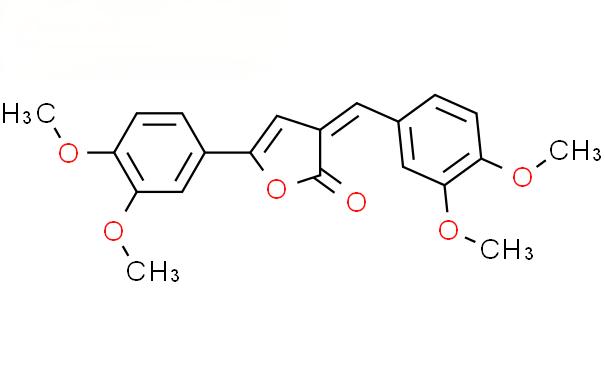
1.2 Water stability
The stability of curcumin is related to the pH value, and the higher the pH value, the more unstable it is. The color of a turmeric solution changes with pH: it is red when the pH of the solution is less than 1, yellow in the range of pH 1 to 7, and orange when the pH is greater than 7.5. This is because the pH of the solution determines the structure of the curcumin, which is either in the keteneol tautomeric form or the cis-trans isomeric form, and thus appears in different colors [2]. Under neutral conditions, curcumin breaks down into smaller products, and the degradation rate gradually accelerates with increasing pH. Vanillin, ferulic acid and ferulic aldehyde are the three most important decomposition products of curcumin[3]. The structural formula of common decomposition products of curcumin is shown in Figure 2.
1.3 Spectral and photophysical stability
Curcumin has light-absorbing properties and is in an excited state. The maximum emission range is 460–560 nm. As the pH of the solution decreases, the fluorescence decay rate of curcumin increases, and the reaction rate also increases in more polar solvents, i.e., the fluorescence spectrum of curcumin increases with the polarity of the solvent, the hydrogen bonds provided, and the increase in the acceptor potential [4].
1.4 Thermal stability
Curcumin is stable at temperatures below 70 °C for up to 10 minutes. Above 70 °C, it begins to decompose. At 100 °C, the decomposition rate increases with a decrease in absorbance; boiling for 15 to 20 minutes results in a loss of 27% to 32% of curcumin. Studies have shown that curcumin loses 53% when processed in a 15 PSI pressure cooker for 10 minutes [5].
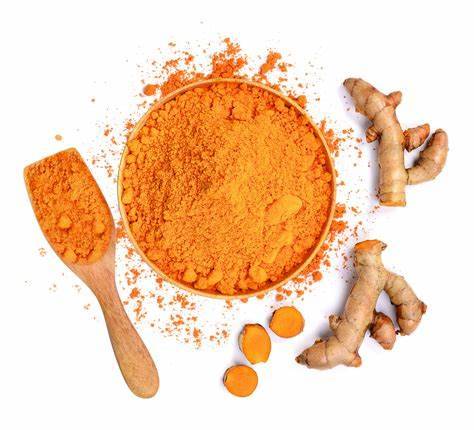
2 Biological functions of curcumin
2.1 Antioxidant
The strong antioxidant function of curcumin is achieved in two main ways: the structure of curcumin itself and the promotion of the synthetic expression of antioxidant enzymes to exert antioxidant activity. Under acidic and neutral conditions, curcumin mainly exists in the form of a ketone, where it contains a highly active carbon atom in the ketene bond between the two methoxyphenolic rings, and curcumin can provide hydrogen atoms [6]. Under alkaline conditions, the enol form predominates. The enol form is more reducing and therefore has ideal antioxidant properties [7]. The curcumin enol form is stabilized by resonance-assisted hydrogen bonding and donates electrons in a mechanism that reflects its antioxidant scavenging activity. Studies have found that Nrf2 plays a more critical role in oxidative stress and normally exists in the form of a Keap-1-Nrf2 heterodimer.
Under conditions of oxidative stress, conformational changes or Nrf2 phosphorylation bind to ARE in the antioxidant gene promoter region to activate the expression of antioxidant enzymes such as SOD, thereby exerting an antioxidant effect [8-9]. Hydrogenation of the unsaturated carbonyl group of curcumin can reduce Nrf2 activation, while 15d-PGJ2, which has this structure, can also activate Nrf2, indicating that the central methylene and hydroxyl groups of curcumin's heptadione and its unsaturated carbonyl group play a role in its antioxidant activity[10] and are related to Nrf2. Endo et al.[ 11] used Nrf2-mutant zebrafish to show that the antioxidant effect of curcumin and other substances is Nrf2-dependent. Curcumin may reduce oxidative damage to cells and protect them by upregulating Nrf2 levels to increase the synthesis of antioxidant enzymes such as catalase, or by inducing Nrf2 nuclear translocation to activate the Nrf2-ARE signaling pathway, thereby reducing oxidative stress in cells and protecting them [12-14]. Studies have shown that asthma disrupts the oxidation-antioxidant balance in the body's airways, resulting in a decrease in the content of individual antioxidants and a decrease in total antioxidant capacity in plasma and alveolar fluid. Curcumin has a significant effect on the treatment of asthmatic model mice [15]. The mechanism of action may be to inhibit the production of nitric oxide and reactive oxygen species in macrophages while also reducing the content of malondialdehyde and other substances to exert an antioxidant effect [16].
2.2 Anti-inflammatory
Curcumin has a strong anti-inflammatory effect. The mechanism may be: on the one hand, it inhibits the activity of enzymes such as cyclooxygenase-2 (COX-2) to inhibit the production of inflammatory mediators such as interleukin (IL1, IL2, IL6, etc.) and tumor necrosis factor (TNF-α) to achieve the purpose of anti-inflammatory; on the other hand, it achieves the purpose of anti-inflammatory by inhibiting the activation of pathways such as NF-κB in the inflammatory response [17]. Curcumin can significantly reduce the total number of white blood cells and lymphocytes in rats with asthma models, proving that curcumin has an inhibitory effect on the inflammatory response in asthma [16]. Lipopolysaccharide (LPS, lipopolysaccharide), an important component of the outer membrane of gram-negative bacteria, can stimulate the body to trigger an inflammatory response and release substances such as TNF-α and interleukins [18-19]. Curcumin has an inhibitory effect on the inflammatory response triggered by LPS-stimulated cells[20] and achieves an anti-inflammatory effect by reducing the level of TNF-α in mice with periodontitis model[21]. Curcumin reduces LPS-induced inflammation by downregulating miR-132 expression and upregulating HMGB1 levels[22]. Curcumin treatment of ulcerative colitis may be achieved by downregulating IL-6 expression, upregulating TGF-β, and regulating the Th17/Treg balance [23]. Shi Chanmei [24] used a rat model of chronic obstructive pulmonary disease to find that curcumin may achieve anti-inflammatory effects by regulating the Nrf2/HO-1 signaling pathway.
2.3 Antibacterial
Curcumin has strong anti-infective effects [25-26] and has a good inhibitory effect on a variety of bacteria, fungi and parasites, and is not prone to drug resistance. Curcumin mainly achieves its antibacterial effect by inducing membrane depolarization and Ca2+ influx in bacteria, thereby destroying the cell membrane structure of the bacteria [27-28]. Ren Jiaoyan et al. [29] found that curcumin can significantly inhibit the growth of Helicobacter pylori, and the mechanism of action may be to use its good membrane permeability to destroy the bacterial cell membrane to achieve the antibacterial effect. Using two fluorescent probes, propidium iodide and calcein, it was found that 94% to 98% of the cell membranes of Staphylococcus aureus were destroyed after treatment with curcumin [30]. Zhang Xin [31] found in experiments that curcumin has a good bacteriostatic effect on the main pathogenic bacteria of dairy cows, also by destroying the bacterial cell wall and increasing the permeability of the cell membrane.
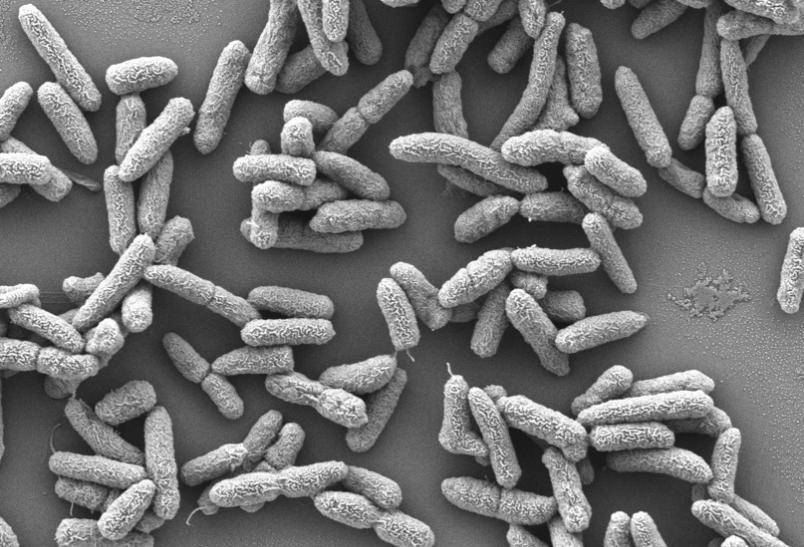
2.4 Other effects
Curcumin also has strong biological functions such as anti-cancer and lowering blood lipids. Curcumin has the effect of preventing and inhibiting tumors by reducing the expression of Bcl-2 and Bcl-xl to cause the activation of the downstream protein caspase-3 [32]. Berrak et al. [33] found that curcumin can inhibit breast cancer cells from reaching the G2/M phase by blocking the PI3K and NFkb pathways to achieve an anti-cancer effect. Curcumin mainly regulates lipid metabolism by enhancing the expression of KLF2 and inhibiting the proliferation of peroxidase activator receptor γ (PPARγ) to regulate adipocytes [34].
3 Application of curcumin in animal production
3.1 Application of curcumin in laying hen production
Curcumin can improve the production performance and egg-laying performance of laying hens. Wang Zhi [35] added curcumin to the laying hen diet and found that the laying rate and feed intake of laying hens increased, the feed-to-egg ratio was significantly reduced, and the total cholesterol content of eggs was also reduced, which indicates that curcumin has a positive effect on improving the production performance of laying hens and improving egg quality. Yang Tai [36] added 0, 100, 200, and 300 mg/kg of curcumin to the diet of Hy-Line chickens and found that the addition level of 200 mg/kg of curcumin in a hot environment had a significant promoting effect on the egg production performance, antioxidant capacity, immune capacity, and intestinal health of laying hens. Some studies have pointed out that curcumin relieves heat stress in laying hens and improves their production performance mainly by enhancing the activity of antioxidant enzymes and enhancing their antioxidant properties [37-38].
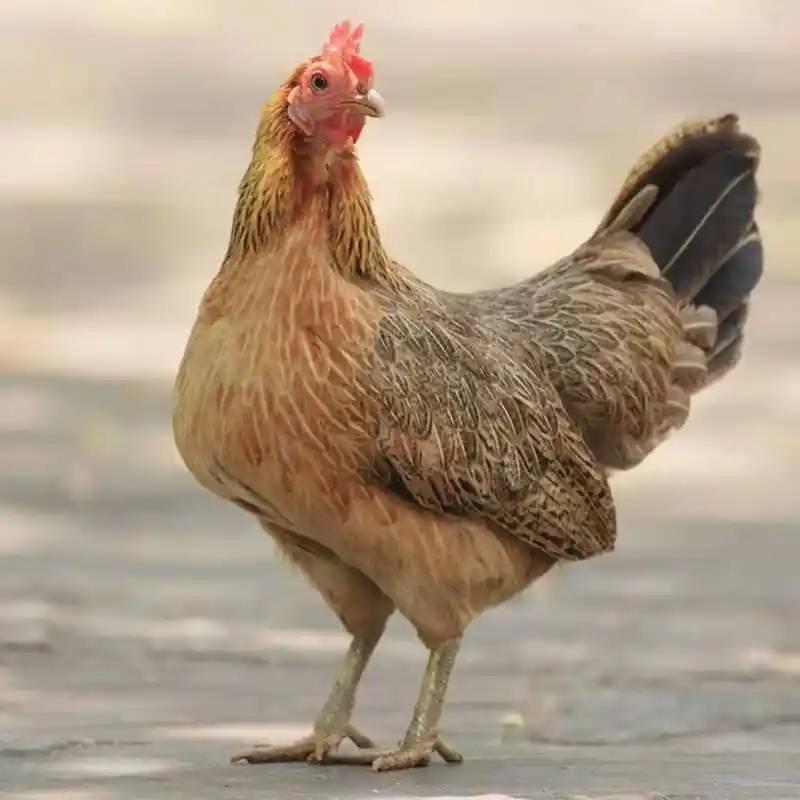
3.2 Application of curcumin in broiler production
The addition of curcumin to broiler diets has a certain effect on improving the production performance and immunity of broilers, as well as improving meat quality. In animals under stress or suffering from disease, the activity of lactate dehydrogenase (LDH) in the serum is significantly increased. Urea nitrogen (BUN) is a metabolic product of protein and is therefore often used as an indicator of nitrogen utilization in the body [39]. Excessive serum uric acid (UA) can cause gout and metabolic diseases in animals [40]. Curcumin added to the diet of broilers significantly reduced the activity of important serum enzymes such as LDH and biochemical indicators such as BUN in the serum, indicating that curcumin can relieve stress in broilers and improve the utilization of protein resources [41]. Sun Quanyou et al. [42] found in experiments that adding curcumin to the broiler diet significantly improved the antioxidant capacity and growth performance of broilers, and regulated the intestinal flora of broilers by increasing the number of beneficial bacteria and reducing the number of pathogenic bacteria. The synergistic effect of curcumin and antimicrobial peptides is even better, indicating that curcumin can be used as a new alternative to antibiotics.
3.3 Curcumin in pig production
Porcine reproductive and respiratory syndrome (PRRS) is one of the diseases that seriously threatens pig health. Studies have shown that curcumin can inhibit the PRRS virus [43]. Zhu Guang et al. [44] found using cell experiments that curcumin inhibits viral replication by inducing HO-1 mRNA and protein expression in a concentration-dependent manner. Curcumin inhibits the intracellular proliferation of the virus by inhibiting virus internalization, blocking G protein-mediated cell fusion, and inhibiting the virus's exoskeleton process.
In addition, curcumin is also an enhancer of porcine circovirus immune vaccines [45], which enhances the body's immune function by promoting the proliferation and differentiation of active immune cells and strengthening their activity. It also significantly enhances the activity of NK cells, suggesting the possibility of curcumin as an immune enhancer. Zhou Ming et al. [46] added curcumin to the diet of crossbred fattening pigs and found that curcumin had a significant effect on daily weight gain, feed conversion rate, meat color, water holding capacity, etc., indicating that curcumin can improve the growth performance of pigs and improve meat quality. Adding curcumin to the diet of fattening pigs can also improve blood biochemistry indicators and enhance the disease resistance of pigs. It is recommended to add 30 0 mg/kg [47]. Deng Hui et al. [48] and Yu Jiayao et al. [49] found that the addition of curcumin to piglet feed significantly increased the activity of maltase in the intestine and the mRNA transcription level of glucose transport protein to promote the digestion and metabolism of sugar by piglets.
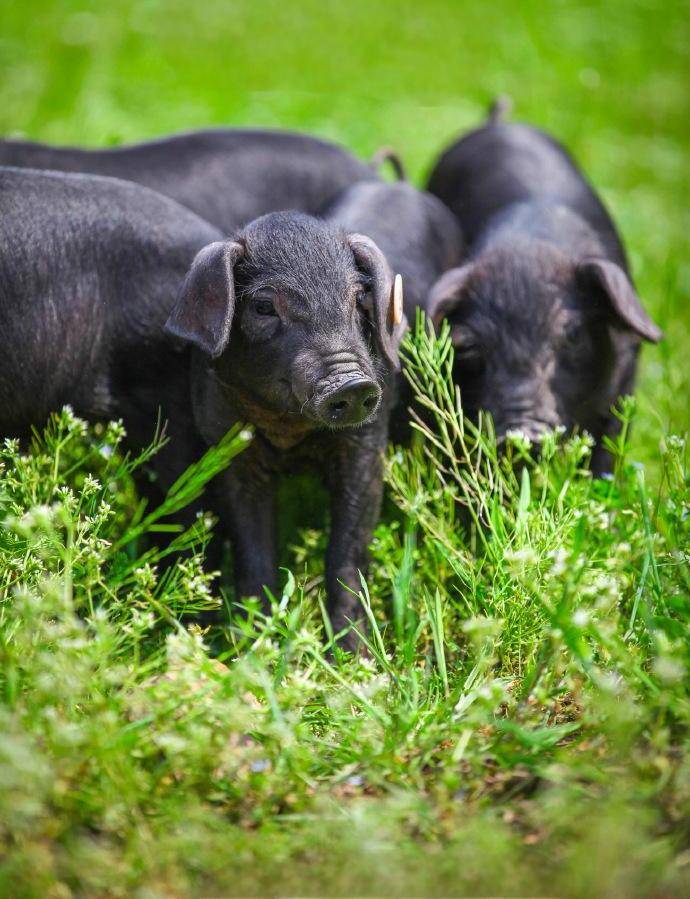
3.4 Curcumin application in ruminant production
Qiu Fan [50] found that adding 100 mg/kg curcumin to the diet of sheep can significantly reduce the fat content, somatic cell count and total leukocyte count in sheep's milk, significantly increase the content of polyunsaturated fatty acids and significantly reduce the content of saturated fatty acids. The number of somatic cells is negatively correlated with milk yield, indicating that curcumin can increase milk yield to a certain extent. The content of saturated fatty acids increases with the increase of somatic cells in milk [51]. Curcumin has a certain effect on improving fat deposition, which may be due to the fact that curcumin binds to rumen microorganisms, affecting the composition of amino acids and lipids, and ultimately manifesting in different fatty acids [52]. The significantly increased activity of antioxidant-related enzymes in the serum and the decreased total number of white blood cells suggest that curcumin has a certain alleviating effect on oxidative stress and inflammatory response in sheep.
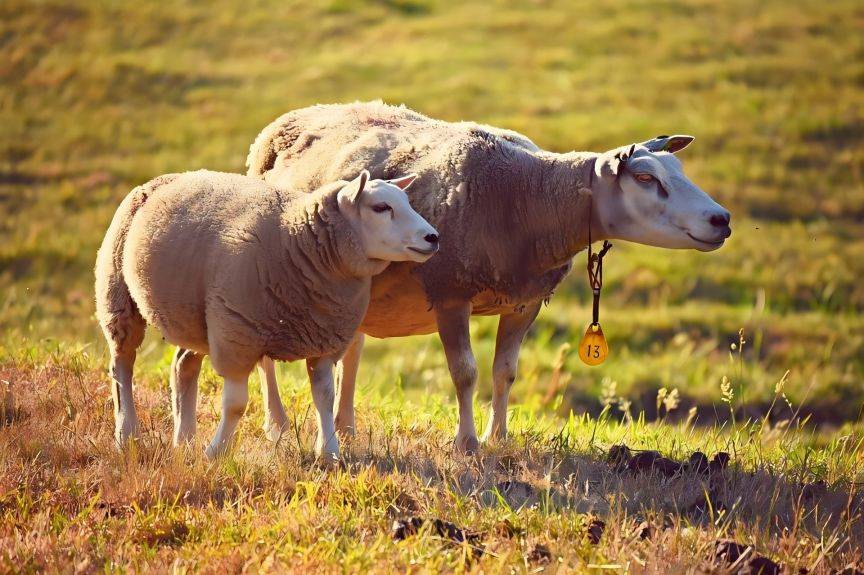
4 Conclusion
Curcumin powder has important physiological functions such as anti-oxidation, anti-inflammation, antibacterial, anticancer and lowering blood lipids. In the general environment of a “ban on antibiotics”, the application prospects of curcumin in animal production are very broad. However, there are still urgent problems to be solved in the use of curcumin, such as the lack of an economical, environmentally friendly, efficient and unified extraction process; poor stability resulting in low utilization; and the specific mechanisms of action of some physiological functions are not yet fully understood. In addition, curcumin has been studied less in animal production, and more animal experiments are needed.
Reference:
[1] Priyadarsini K I. Chemical and structural features influencing the biological activity of curcumin[J]. Current Pharmaceutical Design, 2013, 19(11): 2093-2100.
[2] Manolova Y, Deneva V, Antonov L, et al. The effect of the water on the curcumin tautomerism: A quantitative approach[J]. Spectrochimica Acta Part A-Molecular and Biomolecular Spectroscopy, 2014, 132(11): 815-820.
[3] Slika L, Patra D. A short review on chemical properties, stability and nano-technological advances for curcumin delivery[J]. Expert Opinion on Drug Delivery, 2020, 17: 61-75.
[4] Khopde S M, Priyadarsini K I, Palit D K, et al. Effect of solvent on the excited-state photophysical properties of curcumin[J]. Photochemistry and Photobiology, 2000, 72(5): 625-631.
[5] Schneider C, Gordon O N, Edwards R L, et al. Degradation of curcumin: From mechanism to biological implications[J]. Journal of Agricultural and Food Chemistry, 2015, 63(35): 7606-7614.
[6] Sharma R A, McLelland H R, Hill K A, et al. Pharmacodynamic and pharmacokinetic study of oral Curcuma extract in patients with colorectal cancer[J]. Clinical Ancer Research, 2001, 7(7): 1894-1900.
[7] Balasubramanian K. Molecular orbital basis for yellow curry spice curcumin's prevention of Alzheimer's disease[J]. Journal of Agricultural and Food Chemistry, 2006, 54(10): 3512-3520.
[8] Yun D G, Lee D G. Antibacterial activity curcumin via apoptosis-like response in Escherichia coli[J]. Applied Microbiology and Biotechnology, 2016, 100(12): 5505-5514.
[9] Doello K, Ortiz R, Alvarez P J, et al. Latest in vitro and in vivo assay, clinical trials and patents in cancer treatment using curcumin: A literature review[J]. Nutrition and Cancer, 2018, 70(4), 569-578.
[10] Jha N S, Mishra S, Jha S K, et al. Antioxidant activity and electrochemical elucidation of the enigmatic redox behavior of curcumin and its structurally modified analogues[J]. Electrochimica Acta, 2015, 151: 574-583.
[11] Endo Y, MurakiK, FuseY, et al. Evaluation of antioxidant activity of spice-derived phytochemicals using zebrafish[J]. International Journal of Molecular Sciences, 2020, 21(3): 1109.
[12] Yang T, Yu H, Huang W. Expression of Nrf2 in the kidney tissue of rats with sepsis complicated by acute kidney injury and the intervention effect of curcumin on it [J]. Journal of Guizhou Medical University, 2019, 44(10): 1179-1183.
[13] Song YZ, Guan J, Li M, et al. Effect of curcumin on oxidative stress response in chondrocytes cultured in vitro [J]. Journal of Practical Medicine, 2016, 32(2): 188-191.
[14] Qi L N, Jiang J L, Zhang J F, et al. Curcumin protects human trophoblast HTR8/SVneo cells from HO-induced oxidative stress by activating Nrf2 signaling pathway[J]. Antioxidants (Basel, Switzerland), 2020, 9(2): 121.
[15] Comhair S A, Bhathena P R, Dweik R A, et al. Rapid loss of superoxide dismutase activity during antigen-induced asthmatic response [J]. Lancet, 2000, 355(9204): 624.
[16] Shakeri F, Soukhtanloo M, Boskabady M H. The effect of hydroethanolic extract of rhizome and curcumin on total and differential WBC and serum oxidant, antioxidant biomarkers in rat model of asthma [J]. Iranian Journal of Basic Medical Sciences, 2017, 20(2): 155-165.
[17] Reuter S, Charlet J, Juncker T, et al. Effect of curcumin on nuclear factor kappaB signaling pathways in human chronic myelogenous K562 leukemia cells[J]. Annals of the New York Academy of Sciences, 2009, 1171(1): 436-447.
[18] McGovern T K, Goldberger M, Allard B, et al. Neutrophils mediate airway hyperresponsiveness after chlorine-induced airway injury in the mouse[J]. American Journal of Respiratory Cell and Molecular Biology, 2015, 52(4): 513-22.
[19] Chen S, Yuan J, Yao S, et al. Lipopolysaccharides may aggravate apoptosis through acctumulation of auto phagosomes inalveolar macrophages human silicosis[J]. Autophagy, 2015, 11(12): 2346-2357.
[20] Zhang M, Xie Y, Yan R, et al. Curcumin ameliorates alveolar epithelial injury in a rat model of chronic obstructive pulmonary disease[J]. Life Sciences, 2016, 164: 1-8.
[21] Hao Wenyan, Zhang Lihua, Zheng Zengjuan, et al. Efficacy of curcumin hydrogel in rats with periodontitis [J]. Chinese Journal of Modern Applied Pharmacy, 2019, 36(14): 1773-1778.
[22] Wang Yuli, Chen Juping, Wan Yunqiang. Effect and mechanism of curcumin on inflammation and apoptosis of lipopolysaccharide-induced alveolar macrophages [J]. Huaxi Medicine, 2020, 35(2): 192-197.
[23] Xu Lei, Shen Yan, Zhong Jihong, et al. Effects of curcumin on the expression levels of Th17 cell differentiation-related factors in mice with ulcerative colitis [J]. Chinese Journal of Modern Applied Pharmacy, 2020 (1): 14-18.
[24] Shi Chanshui. Research on the mechanism of curcumin's effects on oxidative stress and inflammation in rats with chronic obstructive pulmonary disease [D]. Guangzhou: Southern Medical University, 2019.
[25] Egan M E, Pearson M, Weiner S A, et al. Curcumin, a major constituent of turmeric, corrects cystic fibrosis defects[J]. Science, 2004, 304: 600-602.
[26] Punithava D, Venkatesan N, Babu M. Protective effects of curcumin against amiodarone-induced pulmonary fibrosis in rats[J]. British Journal of Pharmacology, 2003, 139(7): 1342-1350.
[27] Esmaeelzadeh M, Salehi P, Bararjanian M, et al. Synthesis of new triazole tethered derivatives of curcumin and their antibacterial and antifungal properties[J]. Journal the lranian Chemical Society, 2019, 16(3): 465-477.
[28] Marathe S A, Sen M, Dasgupta I, et al. Differential modulation of intracellular survival of cytosolic and vacuolar pathogens by curcumin[J]. Antimicrobial Agents and Chemotherapy, 2012, 56(11): 5555-5567.
[29] Ren Jiaoyan, Gou Na, Gao Li, et al. Effect of curcumin on Helicobacter pylori and its induced damage to human gastric GES-1 cells [J]. Food Science, 2019, 40(23): 151-156.
[30] Tyagi P, Singh M, KumariH, et al. Bactericidal activity of curcumin I is associated with damaging of bacterial membrane[J]. PLoS One, 2015, 10(3): e0121313.
[31] Zhang Xin. Study on the antibacterial activity and anti-inflammatory mechanism of curcumin against endometritis pathogens [D]. Hohhot: Inner Mongolia Agricultural University, 2017.
[32] Akkoq Y, Berrak O, Arisan E D, et al. Inhibition of P13K sign aling triggered apoptotic potential of curcumin which is hindered by Bcl-2 through activation of autophagy in MCF-7 cells[J]. Biomed Pharmacother, 2015, 71: 161-171.
[33] Berrak Ö, Akkoq Y, Arisan E D, et al. The inhibition of P13K and NF-kB promoted curcumin-induced cell cycle arrest at G2/M via altering polyamine metabolism in Bcl-2 overexpressing MCF-7 breast cancer cells[J]. Biomedicine and Pharmacotherapy, 2016, 77(2016): 150-160.
[34] Liu Jingxia, Li Fangzheng, Xun Yanjun, et al. Effect of curcumin on adipogenic differentiation of porcine adipose mesenchymal stem cells and expression of Krüppel-like factor 2 [J]. Acta Anatomica Sinica, 2017, 48(6): 675-681.
[35] Wang Z. Effects of curcumin on the production performance and egg quality of Roman chickens under high temperature conditions [D]. Zhanjiang: Guangdong Ocean University, 2017.
[36] Yang T. Effects of curcumin on egg quality, antioxidant and immune function and intestinal morphology [D]. Changsha: Hunan Agricultural University, 2018.
[37] Zhu Qizhao. The effect of several anti-stress additives on the egg-laying performance of laying hens under high temperature [C]//Proceedings of the 19th Annual Conference of the Poultry Disease Branch of 2018. Nanning: Chinese Society of Animal Science and Veterinary Medicine, 2018.
[38] Li Guanghui, Zhong Xiuling, Aamir N, et al. Effects of curcumin on the antioxidant properties of blood and tissues of Roman chickens [J]. Anhui Agricultural Science, 2018, 46(21): 96-99.
[39] Ma Y, Shi Y, Li L, et al. Toxicological effects of mercury chloride on laying performance, egg quality, serum biochemistry and histopathology of liver and kidney inlaying hens[J]. Biological Trace Element Research, 2018, 185(2): 465-474.
[40] Tshuma T, Fosgate G T, Hamman R, et al. Effect of different levels of dietary nitrogen supplementation on the relative blood urea nitrogen concentration of beef cows[J]. Tropical Animal Health and Production, 2019, 51(7): 1883-1891.
[41] Deng Xiaojie, Fan Zhaozhuo, Yan Xinchao, et al. Effect of curcumin on biochemical indicators in broiler serum [J]. Journal of Anhui University of Science and Technology, 2019, 33(5): 22-26.
[42] Sun Quanyou, Xu Bin, Wang Linyi, et al. Effects of antimicrobial peptide and curcumin on growth performance, antioxidant function and intestinal microflora of broiler chickens [J]. Chinese Poultry, 2015, 37(20): 32-36.
[43] Du T F, Shi Y P, Xiao S Q, et al. Curcumin is a promising inhibitor of genotype 2 porcine reproductive and respiratory syndrome virus infection[J]. BMC Veterinary Research, 2017, 13(1): 298-299.
[44] Zhu Guang, Wu Xiaoping, Zhou Min, et al. Curcumin inhibits porcine reproductive and respiratory syndrome virus replication by enhancing heme oxygenase-1 expression.
[45] Yu Jianguo, Zhou Li. Effect of curcumin on cellular immune effect of porcine circovirus inactivated vaccine. Chinese Journal of Animal Infectious Diseases , 2017 , 25 ( 5): 60-63.
[46] Zhou Ming, Zhang Jing, Shen Shuting, et al. Study on the effect of curcumin in finishing pigs [J]. Chinese Journal of Cereals, Oils and Foodstuffs , 2014 , 29 ( 3): 67-73.
[47] Yan Guohua, Yang Yuzeng, Zhang Qiuliang. Prospects for the application of curcumin as an antibiotic substitute in pig feed [J]. Northern Animal Husbandry, 2016 (21): 28-29.
[48] Deng Hui, Yang Jiabao, Chen Jin, et al. Effects of curcumin on growth performance, body antioxidant capacity and immune function of Sichuan-Tibetan black piglets [J]. Chinese Feed, 2018 (12): 31-35.
[49] Yu Jiayao, Li Yi, Wang Tian, et al. Effects of dietary curcumin supplementation on intestinal antioxidant capacity and glucose metabolism in weaned piglets subjected to immune stress [J]. Animal Husbandry and Veterinary Medicine, 2018, 50 (5): 51-55.
[50] Qiu, Fan. Effects of curcumin on sheep production performance, milk quality and health [J]. China Feed, 2019(14): 71-75.
[51] CaboniP, Manis C, Lbba I, et al. Compositional profile of ovine milk with a high somatic cell count: A metabolomics approach[J]. International Dairy Journal, 2017, 69: 33-39.
[52] Khanji A N, Michaux F, Salameh D, et al. The study of curcumin interaction with micellar casein and lactic acid bacteria cell envelope[J]. LWT-Food Science and Technology, 2018, 91: 293-302.


 English
English French
French Spanish
Spanish Russian
Russian Korean
Korean Japanese
Japanese